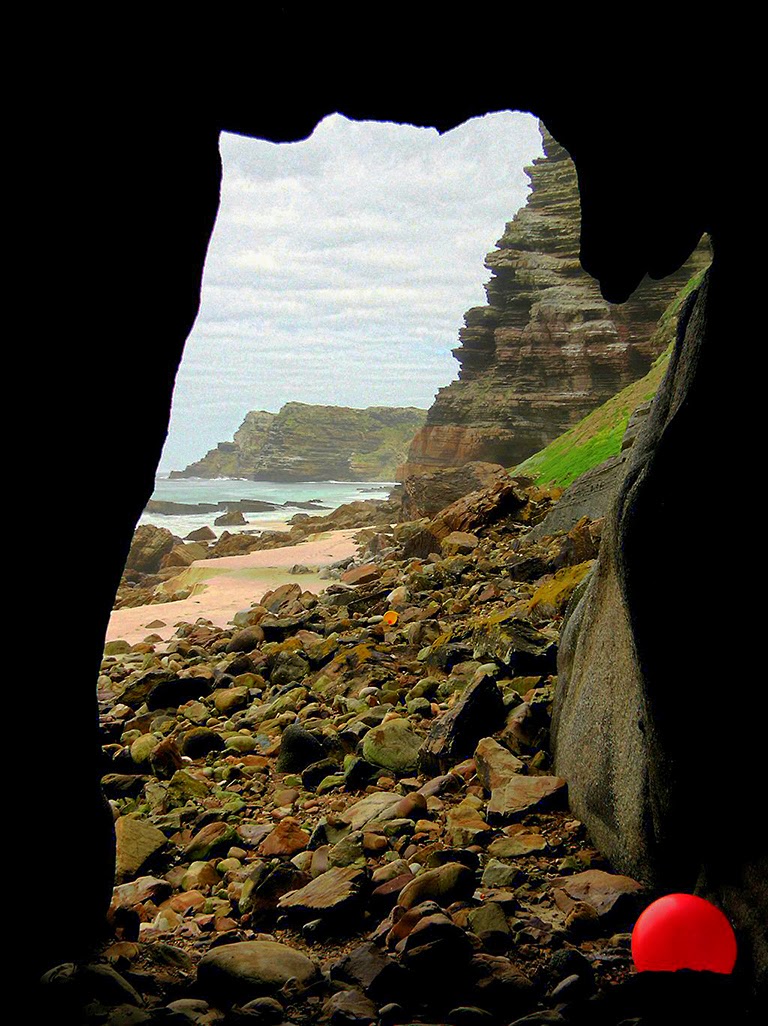Click to enlarge...
The gated, tarred road leading from Booi se Skerm to Venus Pool has become increasingly overgrown over the past few years. I like it that way. Fewer people wander down to the inappropriately named natural tidal pool on the rocks under Paulsberg. It's not that I mind families making full use of an ideal picnic spot and natural wonderland at the risk of perhaps a slip on a rock or a dousing by the sea. Venus Pool's easy access worries me because it forms the gateway to the The Coves, a treacherous walk along the coast and one of Cape Point's most compelling attractions. Despite my deeply ambivalent feelings for this stretch, I want it for myself ...
For now though...
...from Booi se Skerm the land climbs to the mountains along a rocky coast covered by marshland, pools, thick grasses and a few remaining thickets of the forest that once covered the area. It's a stunning coast, along which you can easily spend a day exploring nooks, crannies, weird rock formations, anemones, limpet shells, kelp forests, and any number of sealife forms. Towards Venus Pool and deeper beneath the immense shadow cast by Paulsberg's sheer and craggy face, The Cauldron, a small, block-shaped cutaway from the coast roils and thunders, throwing huge plumes of spray high above any onlooker wise enough to be aware of where the spray might fall.
The Cauldron is symptomatic of my frustration with this coast. It's position, rocks, and topography militate against easy point-and-click photography. I've very few pictures of the place and fewer that I like. The Cauldron's impossible to photograph in a manner that does justice to its raw violence. Facing seawards, it's all but invisible and a camera cannot capture the height of the waves flung to the gulls and terns wheeling and cawing overhead. Side on, getting close to it when the swell booms in is nigh on impossible but, if you do, catching the dark coast plays havoc with any light setting. The mountains too, i.e. Paulsberg, De Boer and Judas Peak usually have the sun above or to their right and throw sharp, unyielding contrasts.
I've considered dropping in at the visitor's centre at Buffelsfontein to suggest the place be painted a more camera-friendly colour, but so far I've desisted. And so it remains a challenge.
The tarred road — a ten-minute amble, ends in a parking area hammered by a storm in September 2008. The steps leading down to Venus Pool have broken away and nature's reclaimed her domain. Best during an incoming tide — when aquamarine swells smash the ledges and launch themselves landwards, the dark, constantly washed rock slabs are ideally situated for an experienced eye to assess the coast stretching to Judas Peak and Batsata Rock. They're also ideal for fishing and mark the start of a protected zone.
Any assessment of an extended walk is likely to underestimate its difficulty. Cliffs, coves, crags, boulder-strewn beaches and sheer drops meld and merge to an illusory conformity from Venus Pool to Judas Peak and, while a visit to the former's two neighbouring coves might be feasible, walking any further demands extreme caution and a guide.
We'll head down that way shortly but, for now, Venus Pool. Surely somebody can come up with a better or more descriptive name. "The Slabs"? "Surrender all hope ..."?
Love was surely never as unforgiving.






































